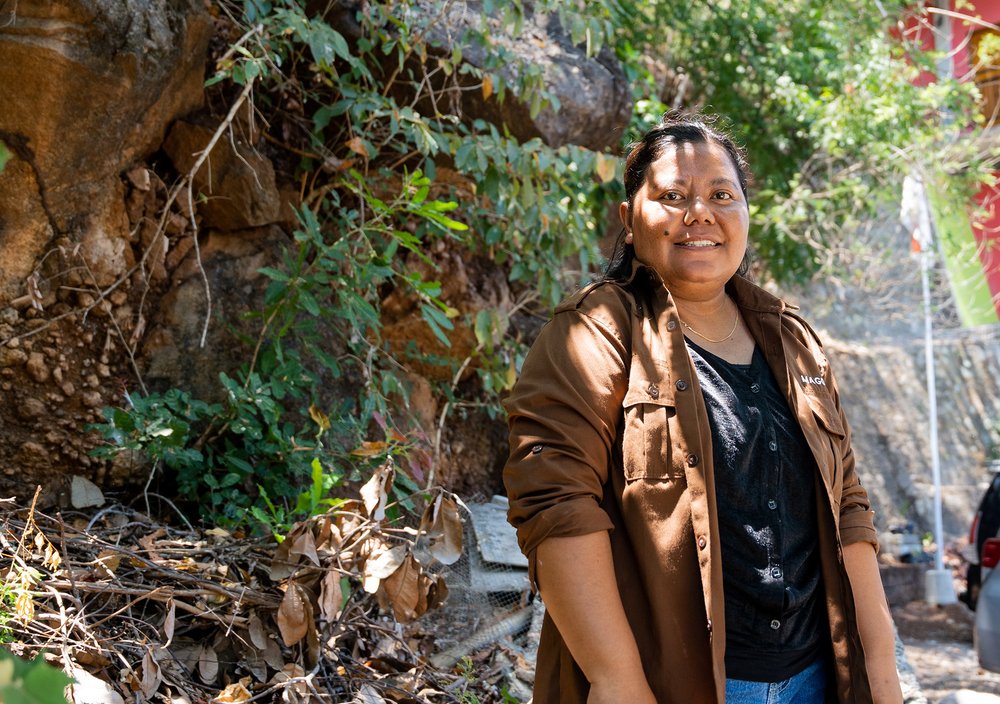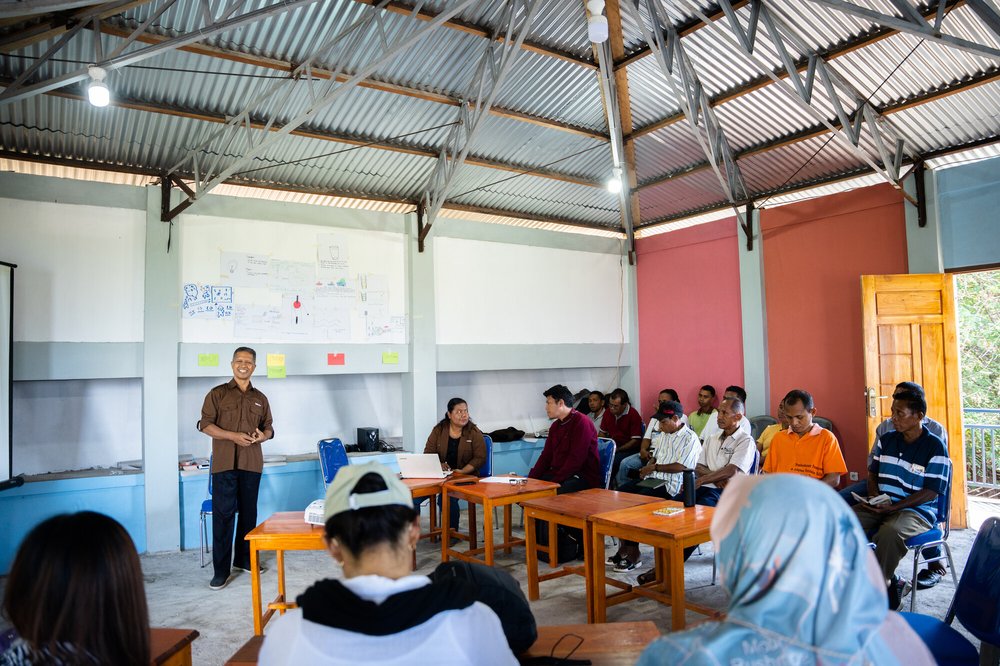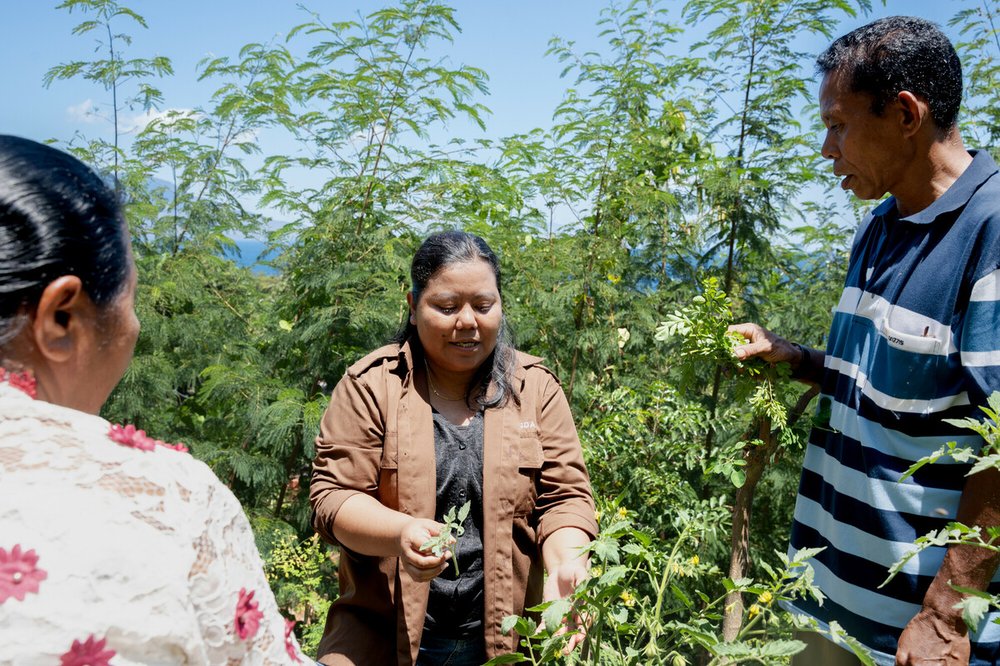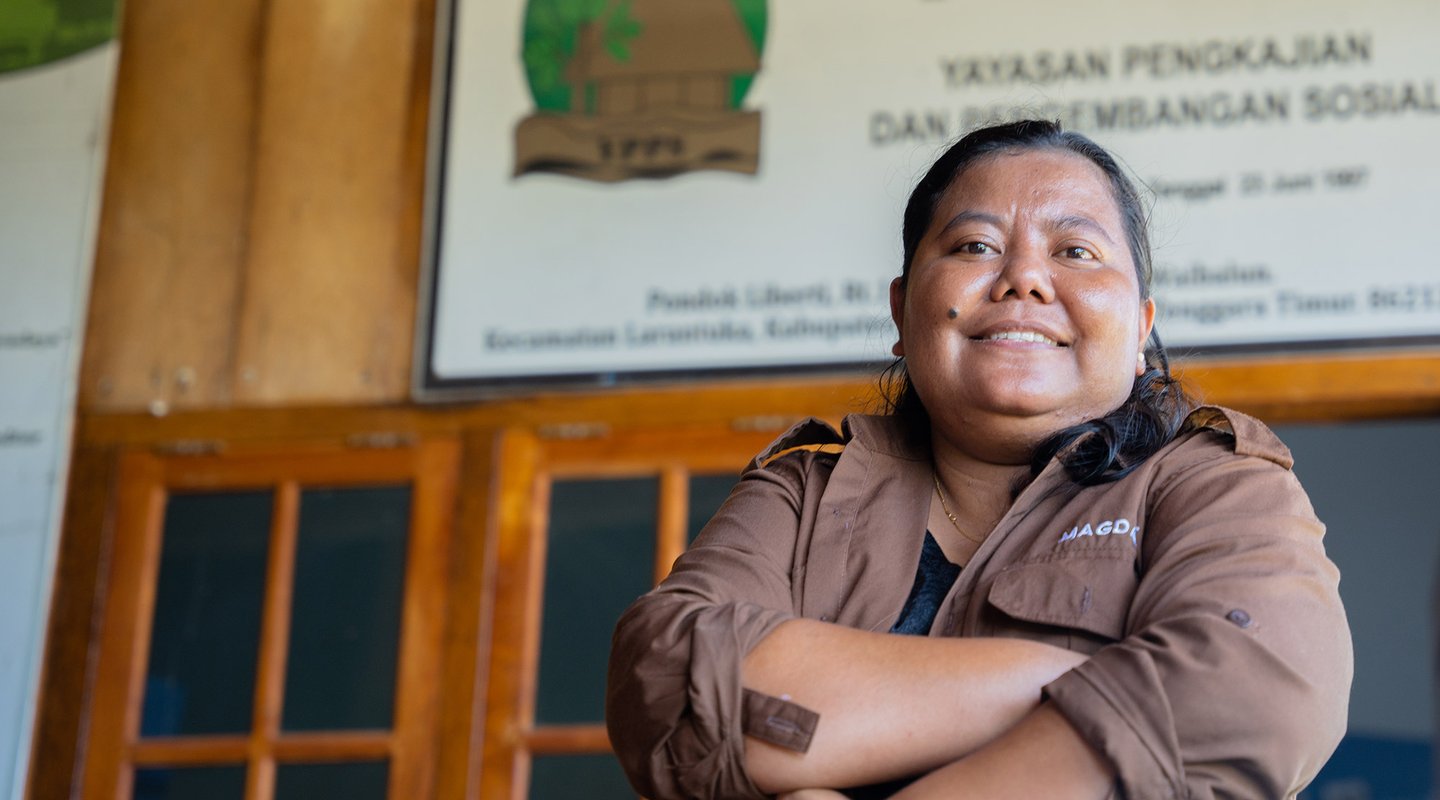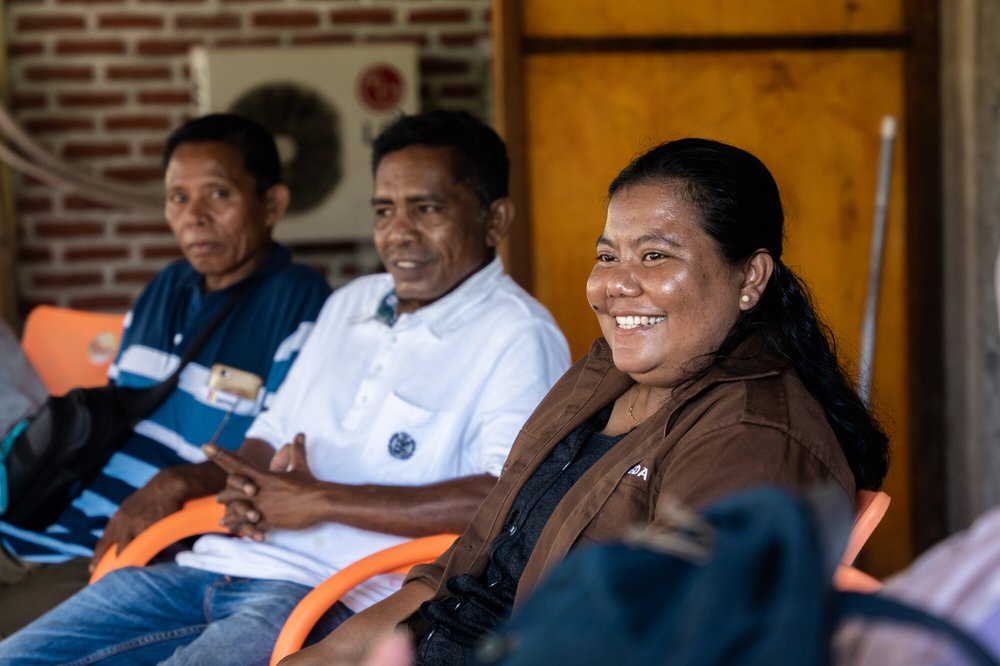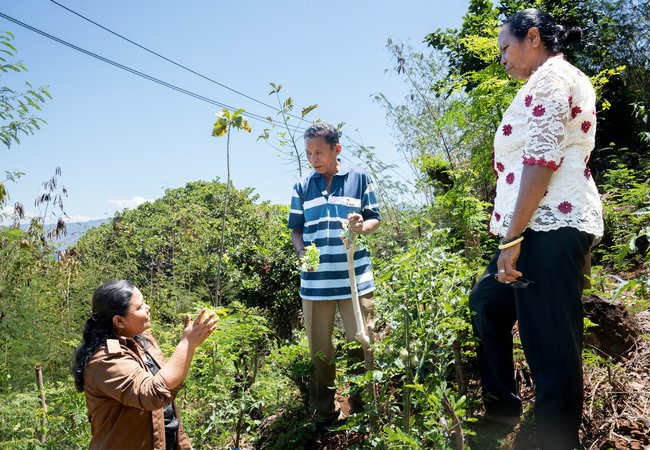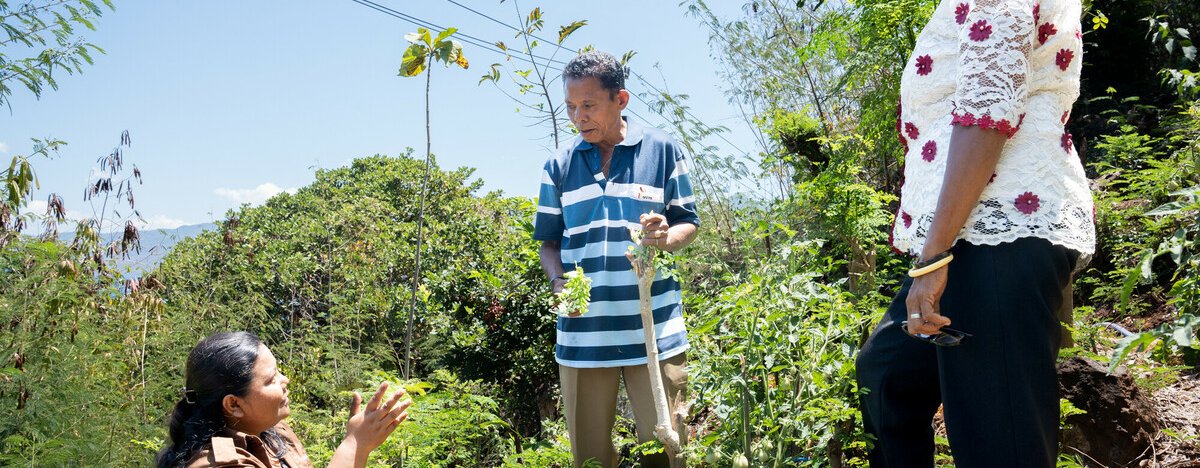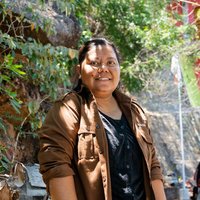Once [people] understand how the climate is, we try to start the adaptive measurements.
The support includes making two types of farms.
There is the wet season farm, used to cultivate food crops. And its derivative, yard farming, which uses the small yard and limited resources to maintain food security.
Now, in the two farm models, we try to implement the concepts of adaptive farming.
The first is from the plant choices: what types of plants are adapted to drought conditions in East Flores and Lembata.
We arrived with sorghum as a choice, for example. It’s a resilient crop that can grow in hot areas with little rainfall and can be used to produce a variety of foods needed for meals – replacing rice or being ground into flour for bread.
Then there are other types of local crops that have been neglected but we have started searching for them again.
This is what was developed by our comrades in the villages.
Then, the yard itself is to meet the requirement of fruits and vegetables that the residents can’t get from farming during the wet season. The smaller the planting media, the more focus there is on maintenance.
We focus more on how the people can have food security, so in this kind of climate, they can still survive.
The farming industry can only harvest once, but by choosing adaptive plant types, and choosing a cultivation process that is nature friendly, allowing decomposition without burning, the people can harvest several times from one type of plant.
